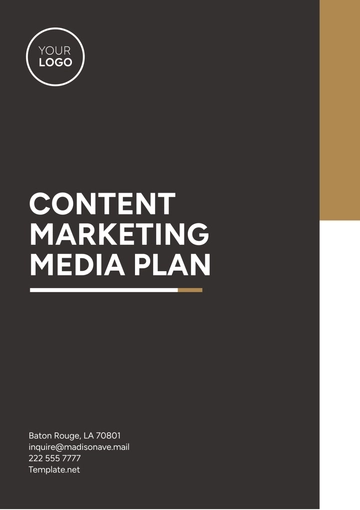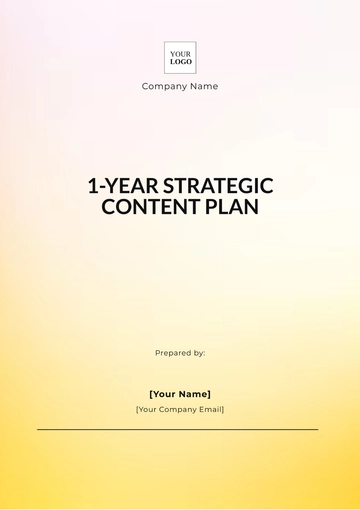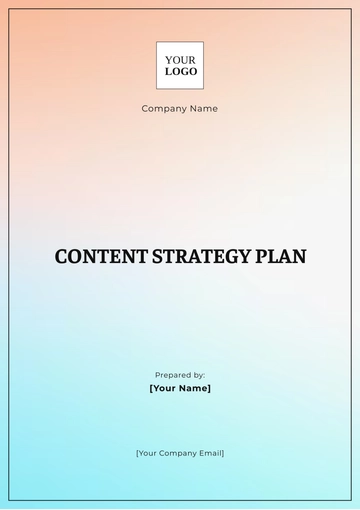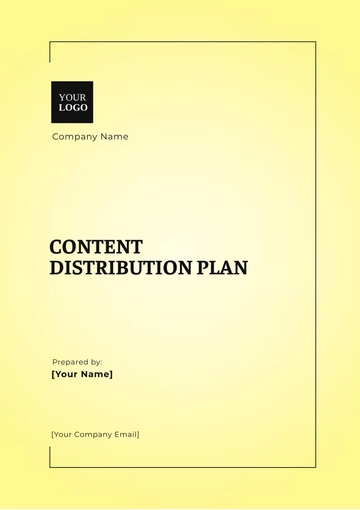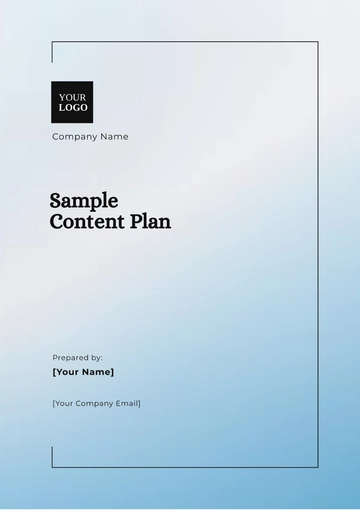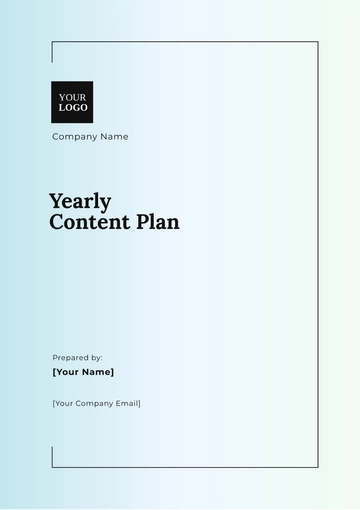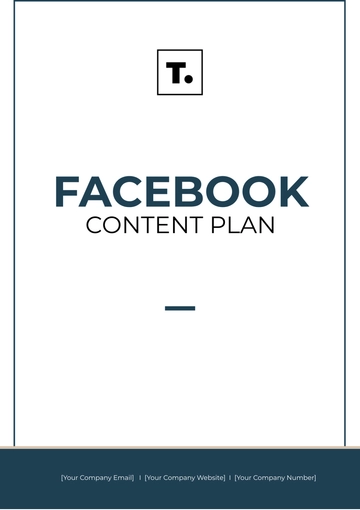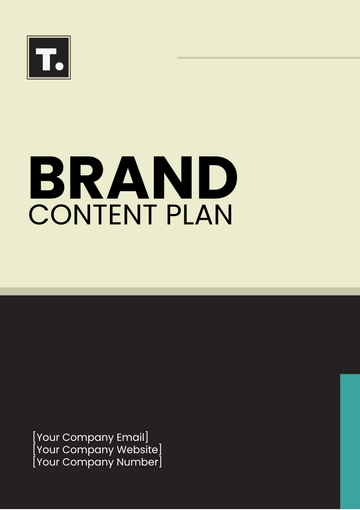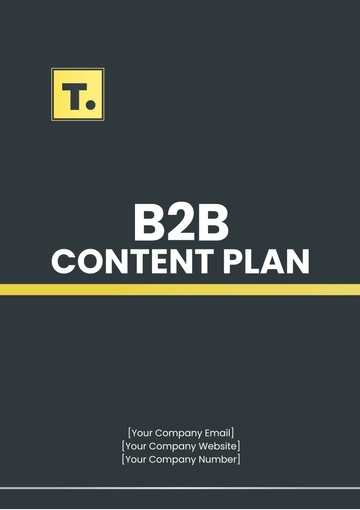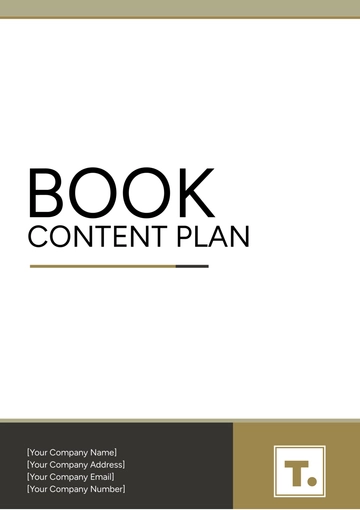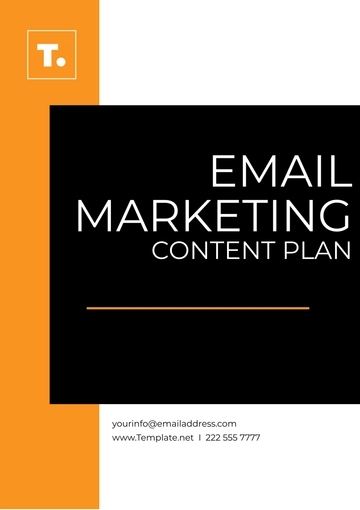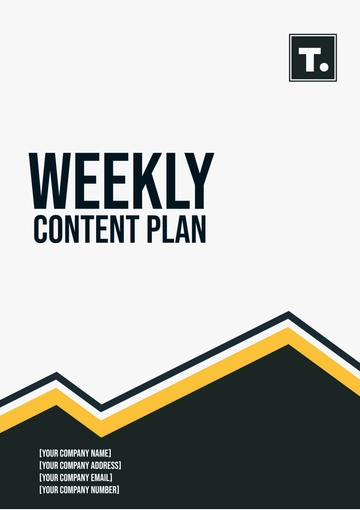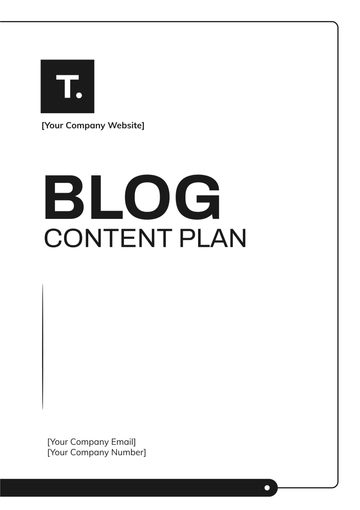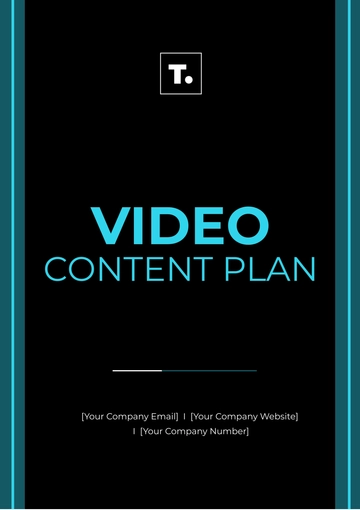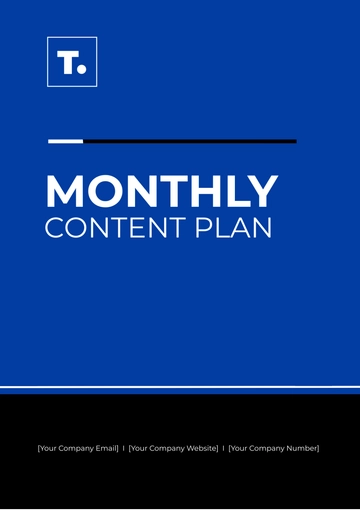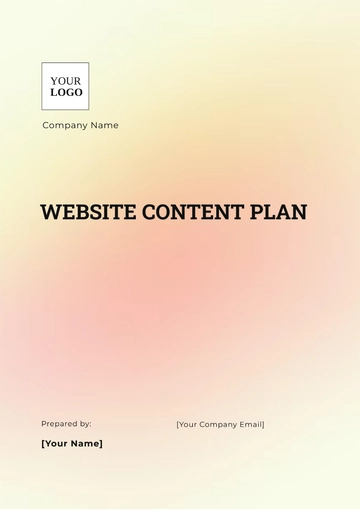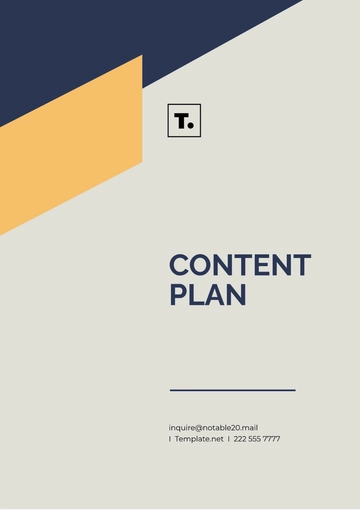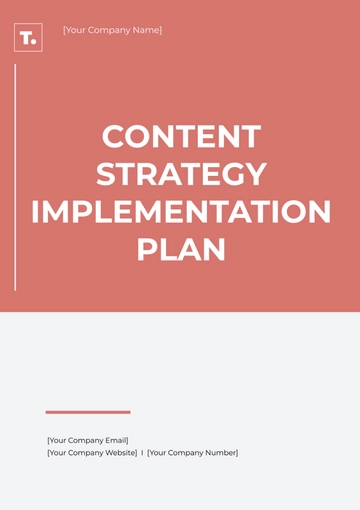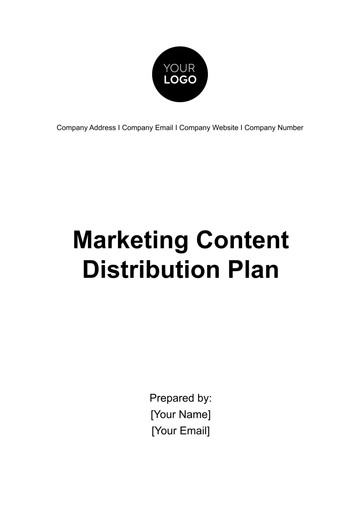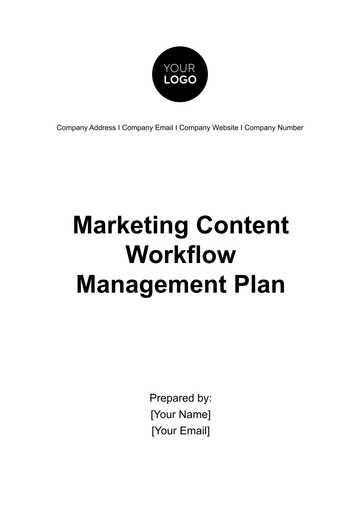Free Brand Content Plan
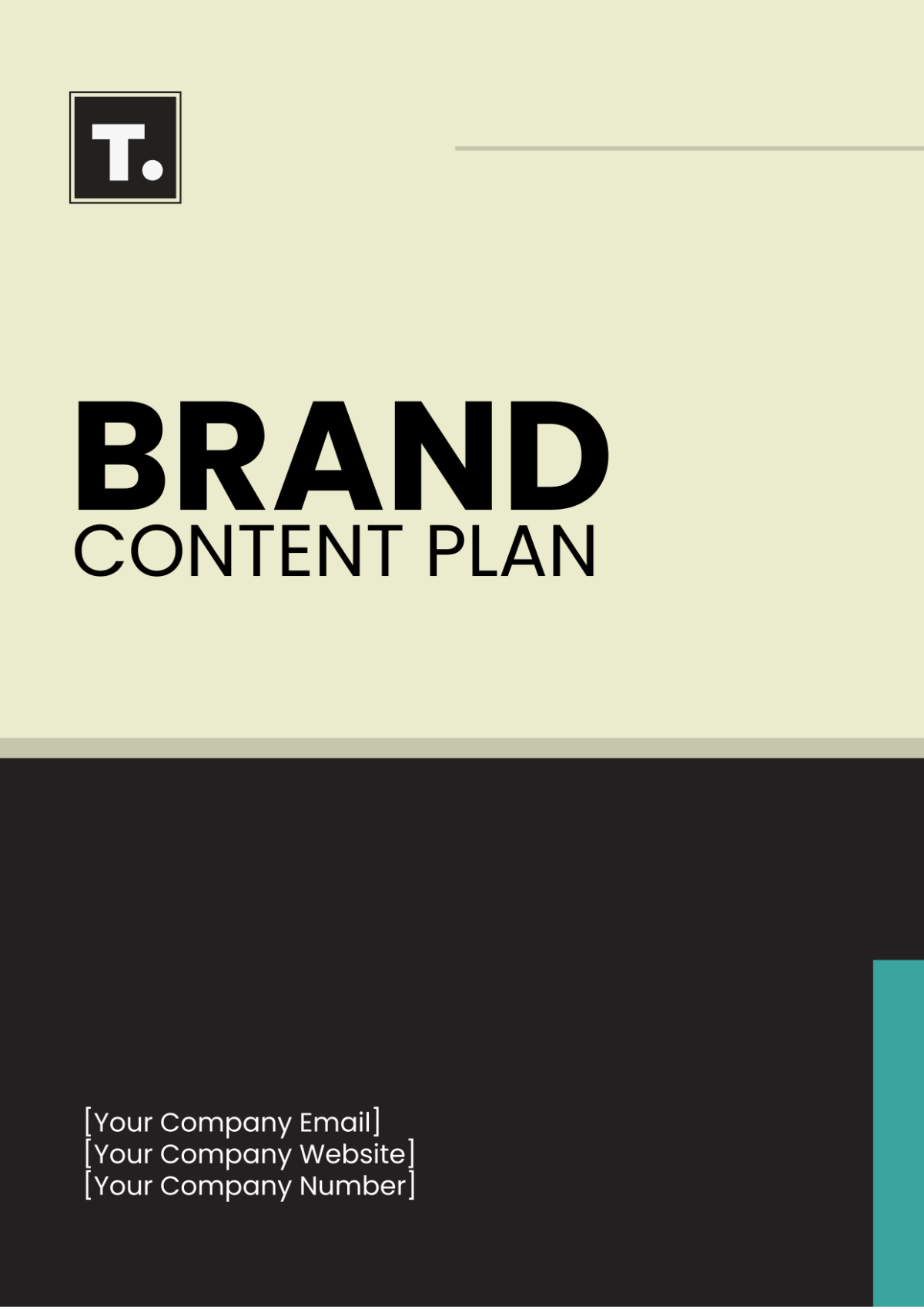
I. Executive Summary
This Brand Content Plan outlines the strategic approach for rebranding [YOUR COMPANY NAME]. Our goal is to realign our brand’s messaging and visuals with its new identity, enhancing brand awareness, loyalty, and market position. The plan includes content goals, target audience, content types, distribution channels, and metrics for success.
II. Brand Mission and Vision
Mission: To innovate and deliver cutting-edge technology solutions that empower businesses to achieve their fullest potential.
Vision: To be the global leader in technological advancements, shaping the future through innovation, integrity, and sustainability.
III. Target Audience
Primary Audience:
Demographics:
Age: 25-45
Gender: All
Location: Global (with a focus on North America, Europe, and Asia)
Income Level: Middle to high-income professionals
Psychographics:
Interests: Technology, innovation, business growth, sustainability
Values: Efficiency, quality, reliability, and forward-thinking
Behaviors: Early adopters of technology, engaged in continuous learning, active on social media
Secondary Audience:
Demographics:
Age: 18-24
Gender: All
Location: Global
Income Level: Students and entry-level professionals
Psychographics:
Interests: Education, career development, technology trends
Values: Innovation, sustainability, and professional growth
Behaviors: Frequent online researchers, active on social media platforms, engage with educational content
IV. Content Goals and Objectives
Increase Brand Awareness:
Achieve a 30% increase in brand mentions across social media platforms by Q3 2050.
Enhance Brand Loyalty:
Boost customer retention rates by 20% by Q4 2050 through consistent and engaging content.
Align Brand Messaging:
Ensure 100% of content reflects the new brand identity and values by mid-2050.
Expand Market Reach:
Increase website traffic from target regions (North America, Europe, Asia) by 25% by the end of 2050.
V. Content Types and Formats
Blog Posts:
Topics: Innovation in technology, sustainable practices, case studies, and thought leadership articles.
Frequency: Weekly
Videos:
Formats: Brand stories, product demos, customer testimonials, and behind-the-scenes.
Frequency: Bi-weekly
Social Media Posts:
Platforms: LinkedIn, Twitter, Instagram, and Facebook
Formats: Infographics, short videos, carousel posts, and interactive polls.
Frequency: Daily
Email Newsletters:
Content: Company updates, blog highlights, special offers, and event invitations.
Frequency: Monthly
Whitepapers and E-books:
Topics: Industry trends, in-depth analysis, and future forecasts.
Frequency: Quarterly
VI. Content Themes and Topics
Innovation and Technology:
The latest advancements and how [YOUR COMPANY NAME] is leading the charge.
Sustainability:
Our commitment to sustainable practices and the impact on our products and services.
Customer Success Stories:
Case studies highlighting customer achievements facilitated by our technology.
Behind-the-Scenes:
Insights into our processes, culture, and the people driving our innovations.
Future Trends:
Expert opinions and predictions about the future of technology and industry shifts.
VII. Content Calendar
January - March 2050:
Launch rebranding blog series.
Release introductory video about the new brand identity.
Weekly social media teasers and updates.
April - June 2050:
Publish customer success stories and case studies.
Host a webinar on the future of technology.
Increase social media engagement activities.
July - September 2050:
Release a whitepaper on industry trends.
Share behind-the-scenes videos.
Continue with regular blog posts and social media content.
October - December 2050:
Publish a comprehensive e-book on sustainable practices.
Run a year-end email newsletter campaign.
Review and analyze content performance.
VIII. Distribution Channels
Website: Main hub for all content, including blogs, videos, and resources.
Social Media: LinkedIn, Twitter, Instagram, Facebook for regular updates and engagement.
Email Marketing: Monthly newsletters and special announcements.
Webinars and Online Events: Live interaction and engagement with our audience.
Industry Publications: Guest articles and advertisements to reach a broader audience.
IX. SEO and Keyword Strategy
Primary Keywords: Innovation in technology, sustainable technology solutions, tech industry trends, business growth technology.
Secondary Keywords: [YOUR COMPANY NAME] rebranding, tech advancements, sustainable business practices.
SEO Best Practices: Optimize all content for search engines with relevant keywords, meta descriptions, alt texts, and internal linking.
X. Metrics and KPIs
Website Traffic: Monitor via Google Analytics.
Social Media Engagement: Track likes, shares, comments, and mentions.
Email Open Rates and Click-through Rates: Use email marketing tools.
Content Reach: Measure through social media analytics and website metrics.
Customer Feedback: Collect through surveys and direct interactions.
XI. Budget and Resources
Content Creation: $50,000
Marketing and Distribution: $30,000
Tools and Software: $10,000
Personnel Costs: $60,000
Total Budget: $150,000
XII. Roles and Responsibilities
Content Strategist: Develop and oversee the content plan.
Content Creators: Writers, designers, and videographers responsible for producing content.
Social Media Manager: Manage social media accounts and engagement.
SEO Specialist: Optimize content for search engines.
Marketing Manager: Coordinate the overall marketing strategy and ensure alignment with business goals.
Project Manager: Track progress and ensure timely delivery of content.
- 100% Customizable, free editor
- Access 1 Million+ Templates, photo’s & graphics
- Download or share as a template
- Click and replace photos, graphics, text, backgrounds
- Resize, crop, AI write & more
- Access advanced editor
Introducing the Brand Content Plan Template by Template.net: your ultimate solution for crafting compelling brand narratives. This editable and customizable tool empowers you to tailor your content strategy effortlessly. With its AI Editable Tool, unlock seamless editing capabilities, ensuring your brand's voice resonates across platforms. Elevate your storytelling prowess and captivate audiences with every word.
You may also like
- Finance Plan
- Construction Plan
- Sales Plan
- Development Plan
- Career Plan
- Budget Plan
- HR Plan
- Education Plan
- Transition Plan
- Work Plan
- Training Plan
- Communication Plan
- Operation Plan
- Health And Safety Plan
- Strategy Plan
- Professional Development Plan
- Advertising Plan
- Risk Management Plan
- Restaurant Plan
- School Plan
- Nursing Home Patient Care Plan
- Nursing Care Plan
- Plan Event
- Startup Plan
- Social Media Plan
- Staffing Plan
- Annual Plan
- Content Plan
- Payment Plan
- Implementation Plan
- Hotel Plan
- Workout Plan
- Accounting Plan
- Campaign Plan
- Essay Plan
- 30 60 90 Day Plan
- Research Plan
- Recruitment Plan
- 90 Day Plan
- Quarterly Plan
- Emergency Plan
- 5 Year Plan
- Gym Plan
- Personal Plan
- IT and Software Plan
- Treatment Plan
- Real Estate Plan
- Law Firm Plan
- Healthcare Plan
- Improvement Plan
- Media Plan
- 5 Year Business Plan
- Learning Plan
- Marketing Campaign Plan
- Travel Agency Plan
- Cleaning Services Plan
- Interior Design Plan
- Performance Plan
- PR Plan
- Birth Plan
- Life Plan
- SEO Plan
- Disaster Recovery Plan
- Continuity Plan
- Launch Plan
- Legal Plan
- Behavior Plan
- Performance Improvement Plan
- Salon Plan
- Security Plan
- Security Management Plan
- Employee Development Plan
- Quality Plan
- Service Improvement Plan
- Growth Plan
- Incident Response Plan
- Basketball Plan
- Emergency Action Plan
- Product Launch Plan
- Spa Plan
- Employee Training Plan
- Data Analysis Plan
- Employee Action Plan
- Territory Plan
- Audit Plan
- Classroom Plan
- Activity Plan
- Parenting Plan
- Care Plan
- Project Execution Plan
- Exercise Plan
- Internship Plan
- Software Development Plan
- Continuous Improvement Plan
- Leave Plan
- 90 Day Sales Plan
- Advertising Agency Plan
- Employee Transition Plan
- Smart Action Plan
- Workplace Safety Plan
- Behavior Change Plan
- Contingency Plan
- Continuity of Operations Plan
- Health Plan
- Quality Control Plan
- Self Plan
- Sports Development Plan
- Change Management Plan
- Ecommerce Plan
- Personal Financial Plan
- Process Improvement Plan
- 30-60-90 Day Sales Plan
- Crisis Management Plan
- Engagement Plan
- Execution Plan
- Pandemic Plan
- Quality Assurance Plan
- Service Continuity Plan
- Agile Project Plan
- Fundraising Plan
- Job Transition Plan
- Asset Maintenance Plan
- Maintenance Plan
- Software Test Plan
- Staff Training and Development Plan
- 3 Year Plan
- Brand Activation Plan
- Release Plan
- Resource Plan
- Risk Mitigation Plan
- Teacher Plan
- 30 60 90 Day Plan for New Manager
- Food Safety Plan
- Food Truck Plan
- Hiring Plan
- Quality Management Plan
- Wellness Plan
- Behavior Intervention Plan
- Bonus Plan
- Investment Plan
- Maternity Leave Plan
- Pandemic Response Plan
- Succession Planning
- Coaching Plan
- Configuration Management Plan
- Remote Work Plan
- Self Care Plan
- Teaching Plan
- 100-Day Plan
- HACCP Plan
- Student Plan
- Sustainability Plan
- 30 60 90 Day Plan for Interview
- Access Plan
- Site Specific Safety Plan
